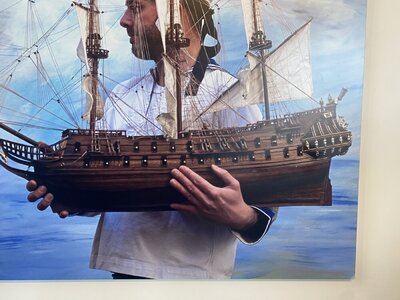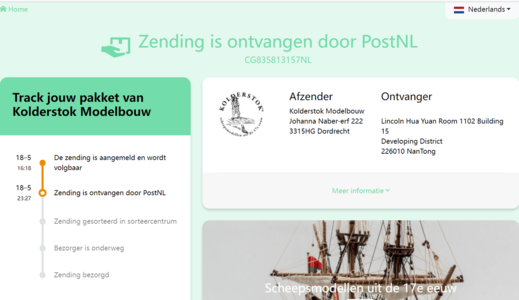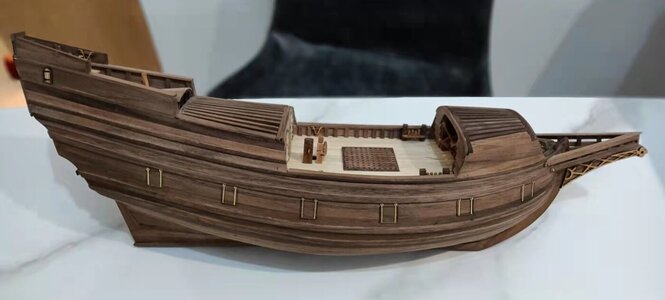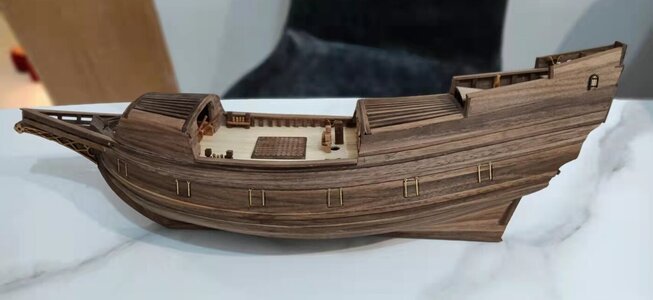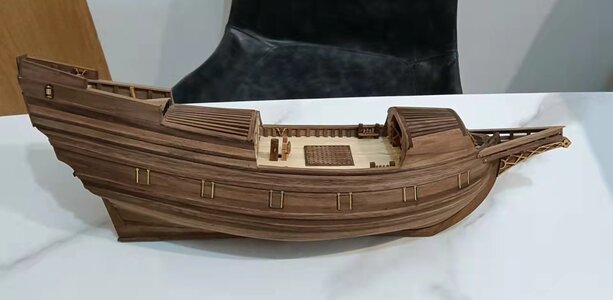It was called the Flying Dutchman...nice dark and dingy- beers where cheap for us SAFers as well. Cheers.Oh Grant, trust me, I believe! What was the name of the pub you visited?
View attachment 309031
From the wallpapercave.
-

Win a Free Custom Engraved Brass Coin!!!
As a way to introduce our brass coins to the community, we will raffle off a free coin during the month of August. Follow link ABOVE for instructions for entering.
-

PRE-ORDER SHIPS IN SCALE TODAY!
The beloved Ships in Scale Magazine is back and charting a new course for 2026!
Discover new skills, new techniques, and new inspirations in every issue.
NOTE THAT OUR FIRST ISSUE WILL BE JAN/FEB 2026
You are using an out of date browser. It may not display this or other websites correctly.
You should upgrade or use an alternative browser.
You should upgrade or use an alternative browser.
HIGH HOPES, WILD MEN AND THE DEVIL’S JAW - Willem Barentsz Kolderstok 1:50
I just did a quick google search - it is a coctail bar now. And they have a second pub which is named Dutch Courage
In New York, they say, "If you ain't Dutch, you ain't much!"
- Joined
- Jan 9, 2020
- Messages
- 10,543
- Points
- 938

Its a good suggestion. The challenge is to find the time for all the potential models. so many options of ships and so little time.Oh well - it is one of the ships my sons proposed to develop in the near future - in a limited number of 50 or so. But it is a tough one to make...
Grant this is a personal to you and to everyone following this log to hi-jack it!I won’t Hi Jack Heinrich log anymore - however in the foyer of our hotel was this pic- You guys may know the ship but I thought was pretty cool .View attachment 309086
- Joined
- Jan 9, 2020
- Messages
- 10,543
- Points
- 938

True!In New York, they say, "If you ain't Dutch, you ain't much!"
- Joined
- Jan 9, 2020
- Messages
- 10,543
- Points
- 938

As a side-effect of all my research I read all the reports I could find on famous Dutch explorers: Cornelis Schouten, the Houtman Brothers, Van Linschoten, Henry Hudson (not Dutch but in service of the Netherlands), obviously Willem Barentsz, Hendrik Hamel, Cornelis Matelief, Jan Cornelissen May and the like. But I have to agree with @RDN1954 Johan - None comes close to the story of Willem Bontekoe! Wow, I am sure that I can turn that into a best-seller again (this time in English though!)
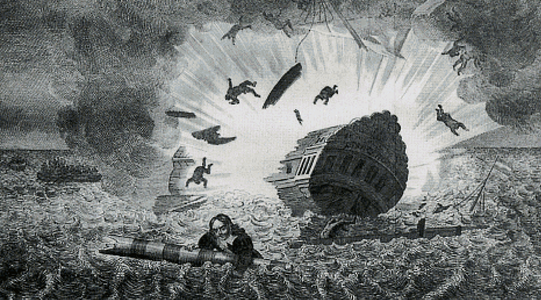
That's what I would call an explosive story!

That's what I would call an explosive story!
And the artist did a bang up job of it! (You started it this time, Heinrich!)
What is easier here is that the ship(s) of Bontekoe were also named the Bontekoe.
- Joined
- Jan 9, 2020
- Messages
- 10,543
- Points
- 938

His own ships (or rather those in which he had a share) were called Bontekoe while the ships that he sailed on as part of the VOC (and which made him "famous") were very well-detailed. First Nieuw Hoorn, then Groningen and Hollandia - just like it should be. And in-between for a short while was also De Hoop.What is easier here is that the ship(s) of Bontekoe were also named the Bontekoe.
His surname, "Bontekoe", literally translated means a cow of different colours.
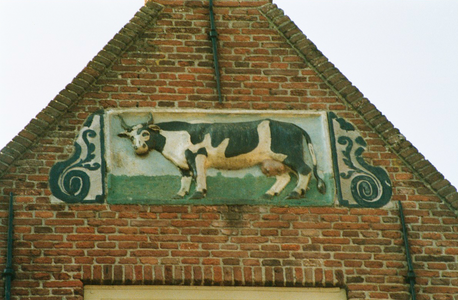
The gable of the house which is believed to have been Bontekoe's. Note the cow.
I also just love how his journal starts: "Men noemt geen koe bont of er is een vlekje aan." - Man does not call a cow "bont" (having different colours) unless the cow has more than one colour (unless, there is a spot or stain on the cow) - meaning: where there is smoke, there is fire!
- Joined
- Jan 9, 2020
- Messages
- 10,543
- Points
- 938

Dear Friends
I have no words to express my thanks and gratitude!
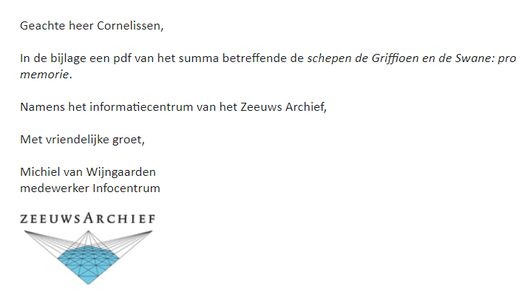
This is the result of countless hours of work. Whilst it may not necessarily reveal the name of Willem Barentsz's ship during the Third Expedition, it will give us the best insight the exact way in which the two Zeeland ships (the 40 last De Swane and the 86 last Griffioen) were prepared (toegemaeckt) for Barentsz's Second Expedition trip in 1595.
I want to express my sincerest thanks to Michiel van Wijngaarden from the Zeeuws Archives. He has gone beyond the call of duty to accomplish this! Thank you sir - you are a scholar and a gentleman!
Vriendelijke groet, - Heinrich
I have no words to express my thanks and gratitude!

This is the result of countless hours of work. Whilst it may not necessarily reveal the name of Willem Barentsz's ship during the Third Expedition, it will give us the best insight the exact way in which the two Zeeland ships (the 40 last De Swane and the 86 last Griffioen) were prepared (toegemaeckt) for Barentsz's Second Expedition trip in 1595.
I want to express my sincerest thanks to Michiel van Wijngaarden from the Zeeuws Archives. He has gone beyond the call of duty to accomplish this! Thank you sir - you are a scholar and a gentleman!
Vriendelijke groet, - Heinrich
Last edited:
That's pretty close to the German: bunte Kuh.His own ships (or rather those in which he had a share) were called Bontekoe while the ships that he sailed on as part of the VOC (and which made him "famous") were very well-detailed. First Nieuw Hoorn, then Groningen and Hollandia - just like it should be. And in-between for a short while was also De Hoop.
His surname, "Bontekoe", literally translated means a cow of different colours.
View attachment 309117
The gable of the house which is believed to have been Bontekoe's. Note the cow.
I also just love how his journal starts: "Men noemt geen koe bont of er is een vlekje aan." - Man does not call a cow "bont" (having different colours) unless the cow has more than one colour (unless, there is a spot or stain on the cow) - meaning: where there is smoke, there is fire!
- Joined
- Jan 9, 2020
- Messages
- 10,543
- Points
- 938

Dear Friends
On Thursday I posted that I had received a very important document from the Zeeland Archives. That document in a nutshell can best be described as a "Job Card" for the work undertaken on the two Zeeland ships for the 1595 expedition as well as a full inventory of how the two ships were equipped for the journey. My hope was that in there - somewhere - I would find some information useful as to how ships were constructed for the Barentsz expeditions and just to gain a better understanding in general of how things worked. Well, to cut a long story short, whilst not providing answers to all my questions, it has answered some of them, has provided very valuable information and was just damn interesting to read.
However, there is one major hiccup.
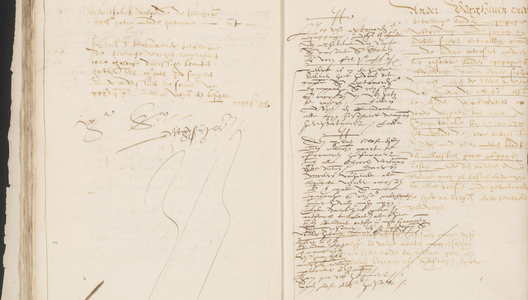
How to decipher that? The original document in the hand of Pieter Reygersbergh - the equipage and ammunition master of Veere. I passed a much simpler page on to three of my Dutch friends and their verdict was unanimous: "Very difficult" - read "impossible".
So I got going. By looking at original resolutions from Zeelandt of which I had the printed transcripts, I began identifying individual letters. Even though the handwriting was different, there were certain similarities. Slowly - ever so slowly - the puzzle was started and at the end of Day One, (Friday) I had this.
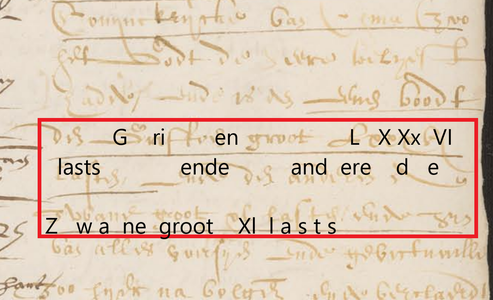
And by today I can post this. I have printed this out as I have copyrighted the English version. I will most certainly not bore you with all 31 pages, but I would like to show you what is available, if you are really serious about what you are doing.
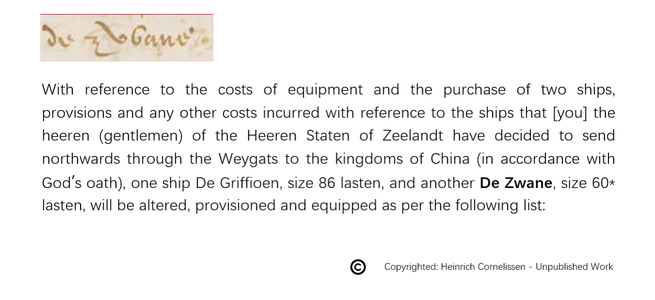
You will see that the 60 lasten as donated by the asterisk changes upon closer examination of the ship.
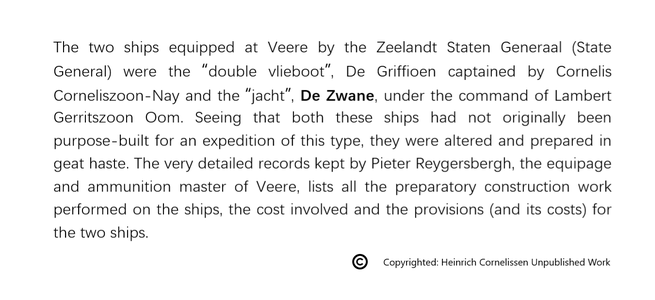
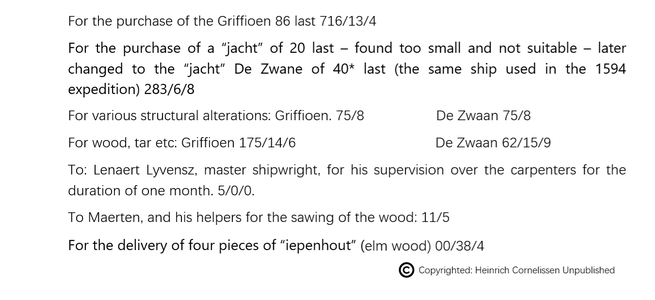
Note that De Zwane is now listed at its "correct" displacement of 40 lasten. The amounts are in pounds, schillings and "grooten Vlaams".
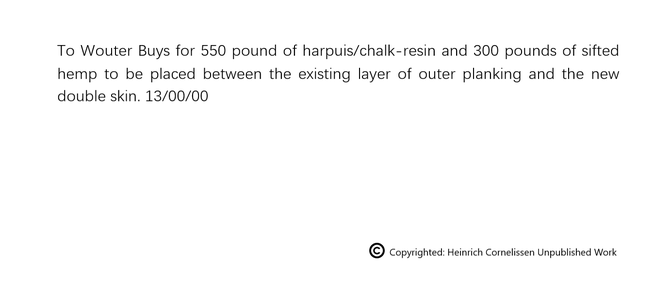
And there is our first piece of crucial information - the Zeeland ships featured double-planked hulls. This is not to be confused with the thin exterior of pine wood that was applied to ships as a means of protecting them against the "paalworm".
And with this type of information available it now raises an interesting question. Do I build the nameless "Het Expeditieschip of Willem Barentsz or do I build the De Zwane (the real one of Zeelandt Staten Generaal - not the doubtful Witte Swaen) as she sailed on the 1595 expedition?
Food for thought.
On Thursday I posted that I had received a very important document from the Zeeland Archives. That document in a nutshell can best be described as a "Job Card" for the work undertaken on the two Zeeland ships for the 1595 expedition as well as a full inventory of how the two ships were equipped for the journey. My hope was that in there - somewhere - I would find some information useful as to how ships were constructed for the Barentsz expeditions and just to gain a better understanding in general of how things worked. Well, to cut a long story short, whilst not providing answers to all my questions, it has answered some of them, has provided very valuable information and was just damn interesting to read.
However, there is one major hiccup.

How to decipher that? The original document in the hand of Pieter Reygersbergh - the equipage and ammunition master of Veere. I passed a much simpler page on to three of my Dutch friends and their verdict was unanimous: "Very difficult" - read "impossible".
So I got going. By looking at original resolutions from Zeelandt of which I had the printed transcripts, I began identifying individual letters. Even though the handwriting was different, there were certain similarities. Slowly - ever so slowly - the puzzle was started and at the end of Day One, (Friday) I had this.

And by today I can post this. I have printed this out as I have copyrighted the English version. I will most certainly not bore you with all 31 pages, but I would like to show you what is available, if you are really serious about what you are doing.

You will see that the 60 lasten as donated by the asterisk changes upon closer examination of the ship.


Note that De Zwane is now listed at its "correct" displacement of 40 lasten. The amounts are in pounds, schillings and "grooten Vlaams".

And there is our first piece of crucial information - the Zeeland ships featured double-planked hulls. This is not to be confused with the thin exterior of pine wood that was applied to ships as a means of protecting them against the "paalworm".
And with this type of information available it now raises an interesting question. Do I build the nameless "Het Expeditieschip of Willem Barentsz or do I build the De Zwane (the real one of Zeelandt Staten Generaal - not the doubtful Witte Swaen) as she sailed on the 1595 expedition?
Food for thought.
Information overload.
As I posted in a log of Docs, I’m getting a headache. I need a nap
As I posted in a log of Docs, I’m getting a headache. I need a nap
Last edited:
- Joined
- Jan 9, 2020
- Messages
- 10,543
- Points
- 938

It reads like a bedtime story now!Information overload.
As I posted in a log of Docs, I’m getting a headache. I need a
This stuff is mesmerizing Heinrich. People keep sending you copies of these very very old manuscripts, so old that the language is out of modern style and you are able to translate it from a logic point of view. If this type of information keeps showing up in your reasearch you will I believe find success. At the very least I would say you have established the ground work for others to pick up on (if they have your type of passion).
So which hull layer will be the outer layer, walnut or oak???
So which hull layer will be the outer layer, walnut or oak???
- Joined
- Jan 9, 2020
- Messages
- 10,543
- Points
- 938

I'm glad that you enjoy it Daniel. It is certainly not my first choice to spend hours behind a PC screen deciphering illegible documents, but now that I have saddled this horse I have to see the ride out. At this point I can honestly say that I am not that interested in finding the name of Barentsz's ship, but have shifted my attention more to finding out as much as I can about this era of ships. I simply love their lines, I love the fact that they were far better sailing ships than their 17th century counterparts (where load capacity was more important than anything else) and I love reading about the men whose war was against nature and elements - with knowledge and discovery as its ultimate goal - not destruction.This stuff is mesmerizing Heinrich. People keep sending you copies of these very very old manuscripts, so old that the language is out of modern style and you are able to translate it from a logic point of view. If this type of information keeps showing up in your reasearch you will I believe find success. At the very least I would say you have established the ground work for others to pick up on (if they have your type of passion).
So which hull layer will be the outer layer, walnut or oak???
- Joined
- Jan 9, 2020
- Messages
- 10,543
- Points
- 938

@Daniel20
So which hull layer will be the outer layer, walnut or oak???
Very good question - If I had known this before Hans had sent the kit, I could have asked him for a layer of 1mm thick linden planks. The supplied thickness of the hull planks of Kolderstok (whether oak or walnut) is 1.5mm though which makes it too thick for double-planking. Above the second deck though, everything is double planked - that will be a combination of the two in an attempt to play around with wood tones.
So which hull layer will be the outer layer, walnut or oak???
Very good question - If I had known this before Hans had sent the kit, I could have asked him for a layer of 1mm thick linden planks. The supplied thickness of the hull planks of Kolderstok (whether oak or walnut) is 1.5mm though which makes it too thick for double-planking. Above the second deck though, everything is double planked - that will be a combination of the two in an attempt to play around with wood tones.


